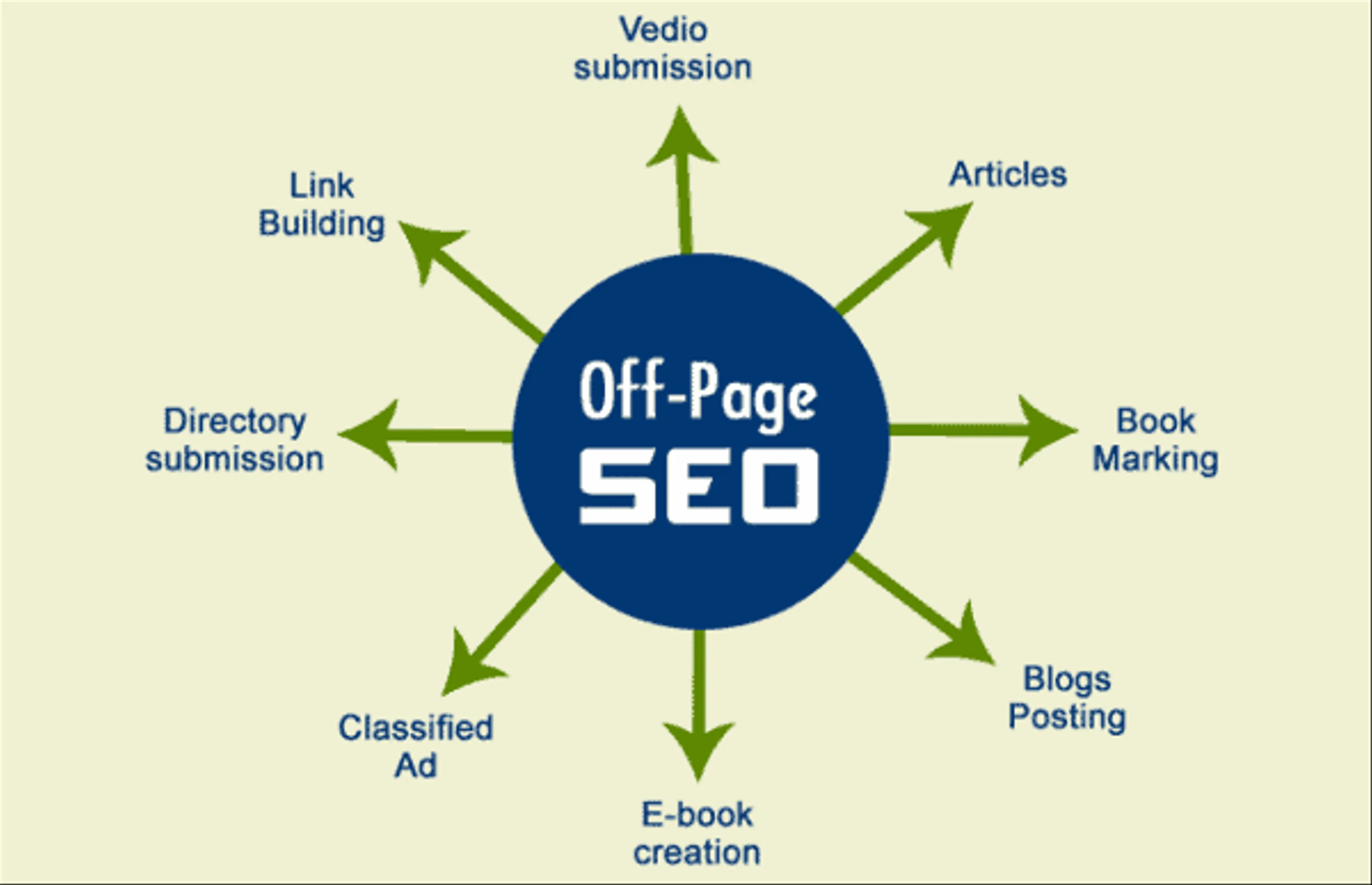On-page SEO covers the factors that you can control on your own website, such as content, keywords, title tags, meta descriptions, URLs, internal links, and more. On-page SEO helps search engines understand what your page is about and how well it matches the user’s search intent.
Mastering On-Page SEO: Best Practices and Techniques
Off-page SEO refers to the actions that take place outside of your own website, such as backlinks, social media, reviews, mentions, and more. Off-page SEO helps search engines and users perceive your site as trustworthy, authoritative, and popular. It also helps you build relationships with other websites and influencers in your niche.
Technical SEO involves the aspects that affect how search engines crawl and index your site, such as site speed, mobile-friendliness, sitemaps, robots.txt, structured data, and more. Technical SEO ensures that your site is easy to access and navigate for both search engines and users.
In this guide, we will focus on off-page SEO and how to build backlinks that matter for your site’s ranking and reputation. We will cover the following topics:
- What are backlinks and why are they important for off-page SEO?
- What are the types of backlinks and how do they affect your site’s authority?
- How to measure the quality and value of backlinks using metrics like authority score, referring domains, anchor text, relevance, freshness, and trustworthiness?
- How to find and analyze your competitors’ backlinks using tools like Semrush or Moz?
- How to create a link building strategy that aligns with your goals and resources?
- How to acquire backlinks using various tactics like content marketing, guest posting, local SEO, reviews, events, and more?
- How to monitor and evaluate your link building efforts using tools like Google Search Console or Ahrefs?
What are backlinks and why are they important for off-page SEO?
Backlinks are links from other websites that point to your site. They are also known as inbound links or external links. Backlinks are one of the most important factors for off-page SEO because they act as votes of confidence and recommendations for your site.

Search engines like Google use backlinks as signals to evaluate the quality and relevance of your site. The more backlinks from high-authority sites you have, the more likely you are to rank higher in search results. This is because backlinks indicate that your site has valuable content that other sites want to share with their audience.
Backlinks also help you drive referral traffic to your site from other sources. When someone clicks on a link from another site that leads to your site, they are showing interest in what you have to offer. This can increase your brand awareness, conversions, and loyalty.
However, not all backlinks are created equal. Some backlinks can have a positive impact on your site’s ranking and reputation, while others can have a negative or neutral effect. Therefore, it is important to understand the different types of backlinks and how to measure their quality and value.
What are the types of backlinks and how do they affect your site’s authority?
Backlinks can be classified into three main types based on how they were obtained: natural links, manually built links, or self-created links.
Natural links
Natural links are links that are given to your site without any action on your part. They are also known as editorial links or organic links. For example, if a blogger writes an article about the best coffee shops in their city and includes a link to your coffee shop website as a source or recommendation, that is a natural link.
Natural links are the most valuable type of backlinks because they show that other sites trust and endorse your content without any incentive or manipulation. They also tend to come from high-authority and relevant sites that have a large and engaged audience.
However, natural links are also the most difficult type of backlinks to acquire because they depend on the quality of your content and the outreach of other sites. You cannot control when or how other sites will link to you. Therefore, you need to create compelling content that attracts attention and provides value to your target audience.

Manually built links
Manually built links are links that are acquired through deliberate link building activities. They are also known as outreach links or earned links. For example, if you contact a website owner or an influencer in your niche and ask them to link to your site or share your content with their audience, that is a manually built link.
Manually built links can be beneficial for off-page SEO because they help you build relationships with other sites and influencers in your niche. They also help you reach a wider and more relevant audience that may be interested in your content.
However, manually built links require time and effort to obtain. You need to identify and contact potential link partners, pitch your content or offer, and follow up with them. You also need to ensure that the links are relevant, natural, and valuable for both parties. Otherwise, they may be seen as spammy or manipulative by search engines and users.
Self-created links
Self-created links are links that are created by yourself on other platforms or sites. They are also known as unnatural links or artificial links. For example, if you add a link to your site in an online directory, a forum, a blog comment, a press release, or a social media profile, that is a self-created link.
Self-created links can be useful for off-page SEO because they help you increase your online presence and visibility. They also help you diversify your link profile and drive some traffic to your site.
However, self-created links are the least valuable type of backlinks because they are easy to create and abuse. They often come from low-quality or irrelevant sites that have little or no authority or trustworthiness. They also tend to have over-optimized anchor text that does not match the context or the content of the linking page.
Search engines can easily detect and devalue self-created links because they are often unnatural and manipulative. They may even penalize your site if you use too many self-created links or use them in a spammy or deceptive way.
How to measure the quality and value of backlinks using metrics like authority score, referring domains, anchor text, relevance, freshness, and trustworthiness?
As we have seen, not all backlinks are equal. Some backlinks can have a positive impact on your site’s ranking and reputation, while others can have a negative or neutral effect. Therefore, it is important to measure the quality and value of backlinks using various metrics and criteria.
Some of the most common metrics and criteria used to evaluate backlinks are:
Authority score: This is a measurement of the overall quality and influence of a website or webpage based on its backlink profile. It is usually calculated using a combination of factors such as the number, quality, diversity, and relevance of backlinks. The higher the authority score, the more valuable the backlink. You can use tools like Semrush or Moz to check the authority score of any website or webpage.
Referring domains: This is the number of unique domains that link to your site. It is also known as domain diversity or domain popularity. The higher the number of referring domains, the more authoritative and popular your site is. However, you should also consider the quality and relevance of the referring domains. You want links from high-authority and relevant domains that have a similar or complementary topic to yours.
Anchor text: This is the clickable text that is used to link to your site. It usually reflects the topic or keyword of the linked page. The anchor text can affect the relevance and ranking of your site for certain keywords. You want anchor text that is natural, descriptive, and diverse. You should avoid anchor text that is over-optimized, generic, or irrelevant.
Relevance: This is the degree of similarity or connection between the linking page and the linked page. It can be measured at different levels such as domain level, page level, content level, or context level. The higher the relevance, the more valuable the backlink. You want links from pages that have a similar or complementary topic to yours, that provide useful information or resources for your audience, and that match the user’s search intent.
Freshness: This is the recency or timeliness of the backlink. It indicates how often the linking page is updated or how new the link is. The higher the freshness, the more valuable the backlink. You want links from pages that are regularly updated with fresh and relevant content, that reflect current trends or events in your niche, and that attract more attention and traffic.
Trustworthiness: This is the degree of reliability or credibility of the linking site or page. It reflects how well it follows ethical and quality standards in its content and practices. The higher the trustworthiness, the more valuable the backlink. You want links from sites that have a good reputation in your niche, that provide accurate and verifiable information, that have positive reviews and ratings from users, and that follow Google’s guidelines.
How to find and analyze your competitors’ backlinks using tools like Semrush or Moz?
One of the best ways to find high-quality and relevant backlinks for your site is to analyze your competitors’ backlinks. Your competitors are sites that rank well for keywords that you want to rank for too. By studying their backlink profile, you can discover their link building strategies, identify their link sources, and find opportunities to replicate or surpass their links.
You can use tools like Semrush or Moz to find and analyze your competitors’ backlinks easily and effectively. Here are the steps to follow:
- Identify your main competitors: You can use tools like Semrush or Moz to find your main competitors based on the keywords that you want to rank for. You can also use Google to search for those keywords and see which sites appear on the first page of results. You should focus on the top 3-5 competitors that are most relevant and similar to your site.
- Find their backlinks: You can use tools like Semrush or Moz to find all the backlinks that point to your competitors’ sites or pages. You can also filter and sort the backlinks by various metrics and criteria such as authority score, referring domains, anchor text, relevance, freshness, and trustworthiness. You should look for the backlinks that have the highest quality and value for your site.
- Analyze their backlinks: You can use tools like Semrush or Moz to analyze the backlinks of your competitors and see how they affect their ranking and performance. You can also compare your backlink profile with theirs and see where you stand and where you can improve. You should look for the patterns, trends, and gaps in their backlink profile and see what you can learn from them.
- Replicate or surpass their backlinks: You can use tools like Semrush or Moz to find opportunities to replicate or surpass the backlinks of your competitors. You can also use various tactics such as content marketing, guest posting, local SEO, reviews, events, and more to acquire those backlinks. You should aim to get links from the same or better sources than your competitors, with higher quality and relevance.
How to create a link building strategy that aligns with your goals and resources?
Link building is not a one-time activity or a quick fix. It is a long-term and ongoing process that requires planning, execution, and evaluation. To create a successful link building strategy, you need to align it with your goals and resources. Here are some steps to follow:
- Define your goals: You need to have clear and specific goals for your link building campaign. What do you want to achieve with link building? How will you measure your success? How will link building support your overall SEO and business objectives? Some common goals for link building are increasing organic traffic, improving keyword rankings, enhancing brand awareness, generating leads, or boosting conversions.
- Assess your resources: You need to have realistic and sufficient resources for your link building campaign. What are your strengths and weaknesses in terms of content, skills, budget, time, tools, etc.? How can you leverage your existing resources or acquire new ones? How can you prioritize and allocate your resources effectively?
- Conduct a competitor analysis: You need to have a good understanding of your competitive landscape and how you compare with them in terms of link building. Who are your main competitors? What are their link building strategies? What are their link sources? What are their strengths and weaknesses? How can you differentiate yourself from them?
- Identify your target audience: You need to have a clear and detailed profile of your target audience and their needs, preferences, behaviors, and pain points. Who are they? What are they looking for? Where do they hang out online? What are their challenges and goals? How can you help them?
- Create valuable content: You need to have high-quality and relevant content that attracts and engages your target audience and provides value to them. What type of content do they consume? What topics do they care about? What formats do they prefer? How can you create content that solves their problems, answers their questions, educates them, entertains them, or inspires them?
- Find link opportunities: You need to have a list of potential link sources that are authoritative, trustworthy, and popular in your niche. How can you find them? What criteria will you use to evaluate them? What tactics will you use to reach out to them? How will you pitch your content or offer?
- Build relationships: You need to have strong and lasting relationships with other websites and influencers in your niche that can help you with link building. How can you connect with them? How can you provide value to them? How can you maintain communication with them? How can you nurture trust and loyalty with them?
- Monitor and evaluate: You need to have a system of tracking and measuring the results of your link building campaign. What metrics will you use to assess your performance? How will you collect and analyze data? How will you report and communicate findings? How will you optimize and improve your strategy?

How to acquire backlinks using various tactics like content marketing, guest posting, local SEO, reviews, events, and more?
There are many tactics that you can use to acquire backlinks for your site. However, not all tactics are suitable or effective for every site or situation. You need to choose the tactics that match your goals, resources, audience, niche, and competitors.
Here are some of the most common and proven tactics that you can use to acquire backlinks:
Content marketing: This is the process of creating and distributing valuable, relevant, and consistent content to attract and retain a clearly defined audience and ultimately drive profitable customer action. Content marketing can help you acquire backlinks by providing useful information or resources that other sites want to link to or share with their audience. Some examples of content marketing are blog posts, ebooks, infographics, videos, podcasts, webinars, case studies, white papers, etc.
Guest posting: This is the process of writing and publishing an article on another website or blog in your niche. Guest posting can help you acquire backlinks by exposing your content and brand to a new and relevant audience that may be interested in your site. Some examples of guest posting are writing an article for a popular blog, magazine, or news site in your niche, contributing to a round-up post or an expert interview, or participating in a podcast or a webinar as a guest speaker.
Local SEO: This is the process of optimizing your site for local search queries and results. Local SEO can help you acquire backlinks by increasing your visibility and credibility in your local area and attracting more local customers. Some examples of local SEO are creating and optimizing a Google My Business profile, getting listed in local directories and citations, getting reviews from local customers, or sponsoring or attending local events.
How to monitor and evaluate your link building efforts using tools like Google Search Console or Ahrefs?
Link building is not a one-and-done activity. It is a continuous and iterative process that requires monitoring and evaluation. You need to track and measure the results of your link building efforts to see what works and what doesn’t, what needs to be improved or changed, and what are the next steps to take.
How to Build Quality and Effective Backlinks
You can use tools like Google Search Console or Ahrefs to monitor and evaluate your link building efforts easily and effectively. Here are some of the things that you can do with these tools:
Check your backlink profile: You can see how many backlinks you have, where they come from, what pages they link to, what anchor text they use, etc. You can also filter and sort the backlinks by various metrics and criteria such as authority score, referring domains, anchor text, relevance, freshness, trustworthiness, etc.
Check your competitors’ backlink profile: You can see how many backlinks your competitors have, where they come from, what pages they link to, what anchor text they use, etc. You can also compare your backlink profile with theirs and see where you stand and where you can improve.
Check your organic traffic: You can see how much traffic you get from organic search results, what keywords you rank for, what pages drive the most traffic, etc. You can also see how your traffic changes over time and how it correlates with your link building activities.
Check your keyword rankings: You can see how well you rank for the keywords that you target in your content and link building campaigns. You can also see how your rankings change over time and how they compare with your competitors’ rankings.
Check your conversions: You can see how many conversions you get from organic traffic sources such as leads, sales,
